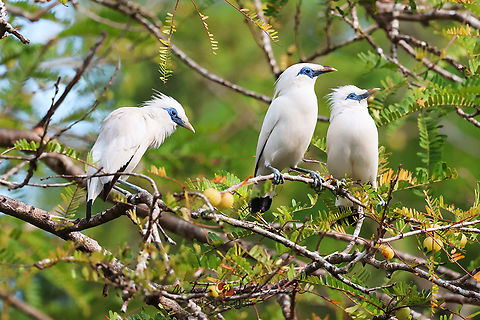
Appearance
The Bali myna is a medium-large bird around 25 centimetres in length. It is almost wholly white with a long, drooping crest, black wing-tips and tail tip. It has a yellow bill with blue bare skin around the eyes and legs. The black-winged starling, a similar species, has a shorter crest and a much larger area of black on wings and tail, plus a yellow eye-ring and legs.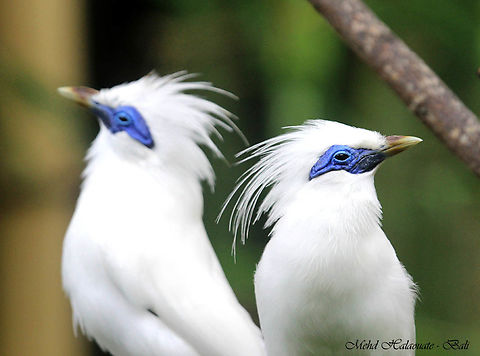
Distribution
The Bali myna is restricted to the island of Bali in Indonesia, where it is the island's only endemic vertebrate species. In 1991, the bird was designated the faunal emblem of Bali. Featured on the Indonesian 200 rupiah coin, its local name is "jalak Bali".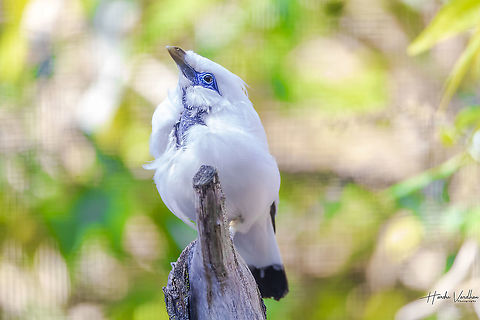
Status
The Bali myna is critically endangered, and the wild population has been close to extinction since at least 1994. As of 2015, less than 100 adults are assumed to exist in the wild, with about 1,000 believed to survive in captivity. The Bali myna is listed in Appendix I of CITES. Trade even in captive-bred specimens is strictly regulated and the species is not generally available legally to private individuals. However, experienced aviculturalists may become affiliated with captive-breeding programs, allowing them to legally keep this species. The number of captive birds bought on the black market is estimated to be twice the number of legally acquired individuals in the captive breeding programs.In 2018 there were three locations on Bali where the birds existed in the wild: the West Bali National Park; Bali's small island of Nusa Penida and Begawan Foundation's breeding and release site at Melinggih Kelod, Payangan.
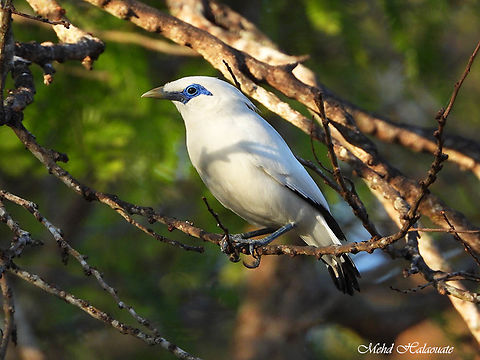
Behavior
In its natural habitat it is inconspicuous, using tree tops for cover and–unlike other starlings–usually coming to the ground only to drink or to find nesting materials; this would seem to be an adaptation to its noticeability to predators when out in the open. The Bali mynah often gathers in groups when it is young to better locate food and watch out for predators. The vocalizations are a variety of sharp chattering calls and an emphatic tweet.The Bali myna's diet includes fruit, seeds, worms and insects.
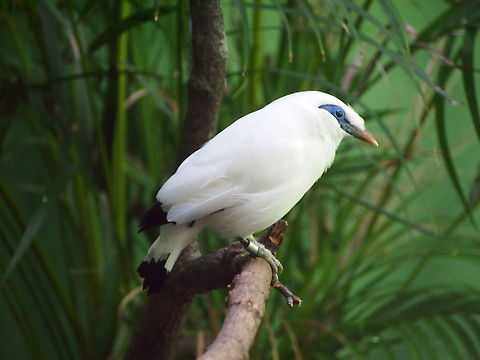
Habitat
The Bali myna is restricted to the island of Bali in Indonesia, where it is the island's only endemic vertebrate species. In 1991, the bird was designated the faunal emblem of Bali. Featured on the Indonesian 200 rupiah coin, its local name is "jalak Bali".In its natural habitat it is inconspicuous, using tree tops for cover and–unlike other starlings–usually coming to the ground only to drink or to find nesting materials; this would seem to be an adaptation to its noticeability to predators when out in the open. The Bali mynah often gathers in groups when it is young to better locate food and watch out for predators. The vocalizations are a variety of sharp chattering calls and an emphatic tweet.The Bali myna's diet includes fruit, seeds, worms and insects.
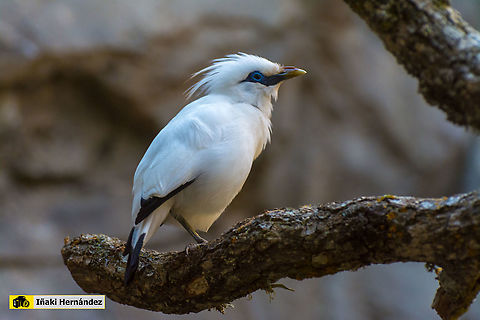
Reproduction
During the breeding season, males attract females by calling loudly and bobbing up and down. The birds nest in tree cavities, with the female laying and incubating two or three eggs. Both males and females bring food to the nest for chicks after hatching.A "breeding loan" involves 12 breeders who each received 15 male and 15 female from the Association of Starling Conservationists from Bogor, West Java. As collateral every breeder should put up a cow in case all the birds died. The breeders are obliged to release 10 percent of the brood into the national park and the rest can be sold off privately....hieroglyph snipped...References:
Some text fragments are auto parsed from Wikipedia.